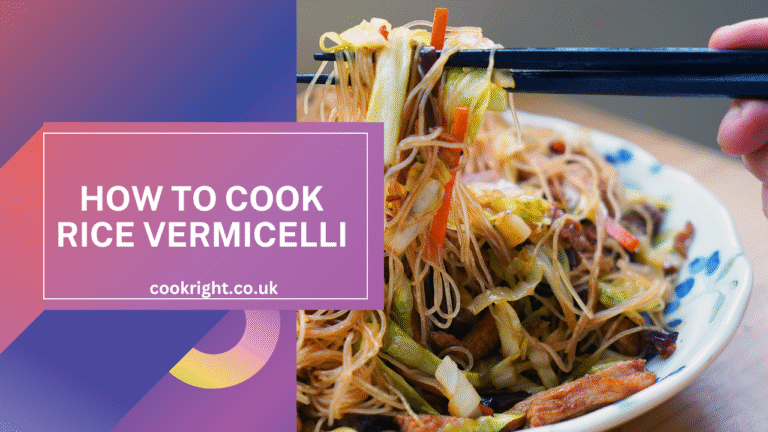Arabic tea, also known as “Shai” in many parts of the Middle East, is more than just a beverage—it’s a symbol of hospitality, comfort, and a bridge to centuries-old traditions. Whether served in the bustling souks of Morocco, the cozy homes of Saudi Arabia, or the tranquil deserts of Oman, Arabic tea holds a special place in the hearts of millions. This guide will take you through the process of crafting authentic Arabic tea, exploring its various regional variations, and offering tips to perfect your brew. Let’s dive into the world of Arabic tea!
The History and Significance of Arabic Tea
Tea has been a central part of Middle Eastern culture for centuries. While the origins of tea can be traced back to ancient China, it found its way to the Middle East through trade routes, eventually becoming a staple in everyday life. Arabic tea is not just a drink; it’s an essential aspect of social gatherings, business meetings, and family events. It’s customary to offer tea to guests as a sign of welcome and respect.
The preparation of tea in the Arab world varies from region to region, but the core values remain the same: hospitality, tradition, and a deep appreciation for the simple pleasure of a good cup of tea.
Key Ingredients and Equipment
To make authentic Arabic tea, you’ll need a few basic ingredients and some essential equipment. Here’s a list of what you’ll need:
Ingredients:
- Black Tea: The base of Arabic tea is usually strong black tea, such as Ceylon or Assam. It provides a robust flavor that forms the foundation of the drink.
- Fresh Mint: Commonly used in Moroccan and Levantine versions, fresh mint leaves add a refreshing and aromatic touch.
- Cardamom Pods: Cardamom is a popular spice in many Middle Eastern teas, imparting a warm, slightly sweet flavor.
- Sugar: Arabic tea is traditionally sweetened, and the amount of sugar can vary greatly depending on personal preference.
- Saffron: In Gulf countries like Saudi Arabia, saffron is sometimes added for a luxurious touch.
- Cinnamon Sticks and Cloves: These spices are optional but can be added for additional warmth and depth of flavor.
- Rose Water or Orange Blossom Water: A few drops of these fragrant waters can elevate your tea to a more aromatic experience.
Equipment:
- Teapot (often ornate and metal): Arabic tea is traditionally brewed in a metal teapot, often beautifully decorated.
- Tea Glasses: Arabic tea is typically served in small, decorative glasses rather than mugs.
- Tea Strainer: To strain out loose tea leaves and spices.
Step-by-Step Recipe for Traditional Arabic Tea
Here’s a classic recipe for Arabic tea that will transport you to the heart of the Middle East:
Serves: 4
Preparation Time: 10 minutes
Cooking Time: 10 minutes
Ingredients:
- 4 cups water
- 2 tablespoons loose black tea (or 4 tea bags)
- 1/2 cup fresh mint leaves (plus extra for serving)
- 4-6 cardamom pods, lightly crushed
- 1 cinnamon stick (optional)
- 4-5 cloves (optional)
- 4 tablespoons sugar (adjust to taste)
- A pinch of saffron (optional)
- 1 teaspoon rose water or orange blossom water (optional)
Instructions:
- Boil the Water: Start by bringing the water to a boil in a teapot. The water should be hot enough to extract the full flavor of the tea and spices.
- Add the Tea and Spices: Once the water is boiling, reduce the heat and add the black tea, cardamom pods, cinnamon stick, and cloves. Allow these ingredients to simmer gently for about 5 minutes. This helps release the spices’ aromatic oils, infusing the tea with their warm, inviting flavors.
- Add Sugar and Mint: Stir in the sugar until fully dissolved. Then, add the fresh mint leaves and continue to simmer for an additional 2-3 minutes. Mint leaves release their essential oils quickly, so this shorter simmer time ensures the tea has a bright, refreshing taste without being overly minty.
- Optional Additions: If you are using saffron, add a small pinch at this stage. Saffron adds a subtle floral note and a beautiful golden hue to the tea. For a touch of floral fragrance, add a teaspoon of rose water or orange blossom water.
- Strain and Serve: Use a tea strainer to pour the tea into small glasses, straining out the tea leaves, mint, and spices.
- Garnish: Garnish each glass with a few fresh mint leaves. This adds a fresh burst of color and an extra layer of aroma as you sip.
- Enjoy: Serve the tea hot, alongside a selection of dates, nuts, or other small treats.
Regional Variations of Arabic Tea
One of the most fascinating aspects of Arabic tea is the way it varies from country to country, each adding its unique twist:
- Moroccan Mint Tea: Known as “Atay bi Nana,” Moroccan mint tea is iconic for its use of gunpowder green tea and abundant fresh mint. It’s often poured from a height to create a frothy top.
- Kuwaiti Tea: In Kuwait, tea is often infused with saffron and cardamom, giving it a luxurious aroma and flavor. Sometimes, a few drops of rose water are added.
- Yemeni Adani Tea: This spiced tea from Yemen is made with black tea, cardamom, cloves, cinnamon, and condensed milk for a rich, creamy finish.
- Egyptian Koshary Tea: This version uses black tea with plenty of sugar and is often served very strong. It’s enjoyed throughout the day in small, concentrated servings.
Tips for the Perfect Arabic Tea
- Quality Ingredients: Always use fresh mint, high-quality tea leaves, and whole spices for the best flavor.
- Adjust Sweetness to Taste: Arabic tea is typically sweet, but you can adjust the sugar level to your preference. Some versions, like Egyptian tea, are served very sweet, while others, like in Morocco, might be less so.
- Pouring Technique: In Moroccan tea culture, the tea is poured from a height to mix air into the tea, creating a frothy top that enhances the drinking experience.
- Experiment with Spices: Don’t be afraid to experiment with different spices and flavorings to find your perfect cup. Arabic tea is highly adaptable and can be tailored to your taste.
The Social Aspect of Arabic Tea
Sharing a pot of tea is an act of bonding and connection in Arabic culture. It’s customary to offer tea to guests as soon as they arrive, and the ritual of pouring and serving is done with care and respect. In many households, the tea set itself is often ornate and cherished, passed down through generations as a symbol of family tradition.
Whether you’re enjoying tea in a bustling café or a quiet home, the act of drinking tea is about more than just quenching thirst—it’s about taking a moment to pause, connect, and savor life.
Conclusion
Arabic tea is more than just a drink; it’s a rich tradition that spans the Middle East and beyond. By mastering the art of brewing this beloved beverage, you’re not just learning a recipe—you’re embracing a cultural practice that’s been cherished for centuries. So gather your ingredients, steep your tea with care, and enjoy a cup of hospitality and warmth.
Whether you’re sipping alone or with friends, Arabic tea is a beautiful reminder of the simple joys that connect us all. Enjoy your tea journey, one sip at a time!




